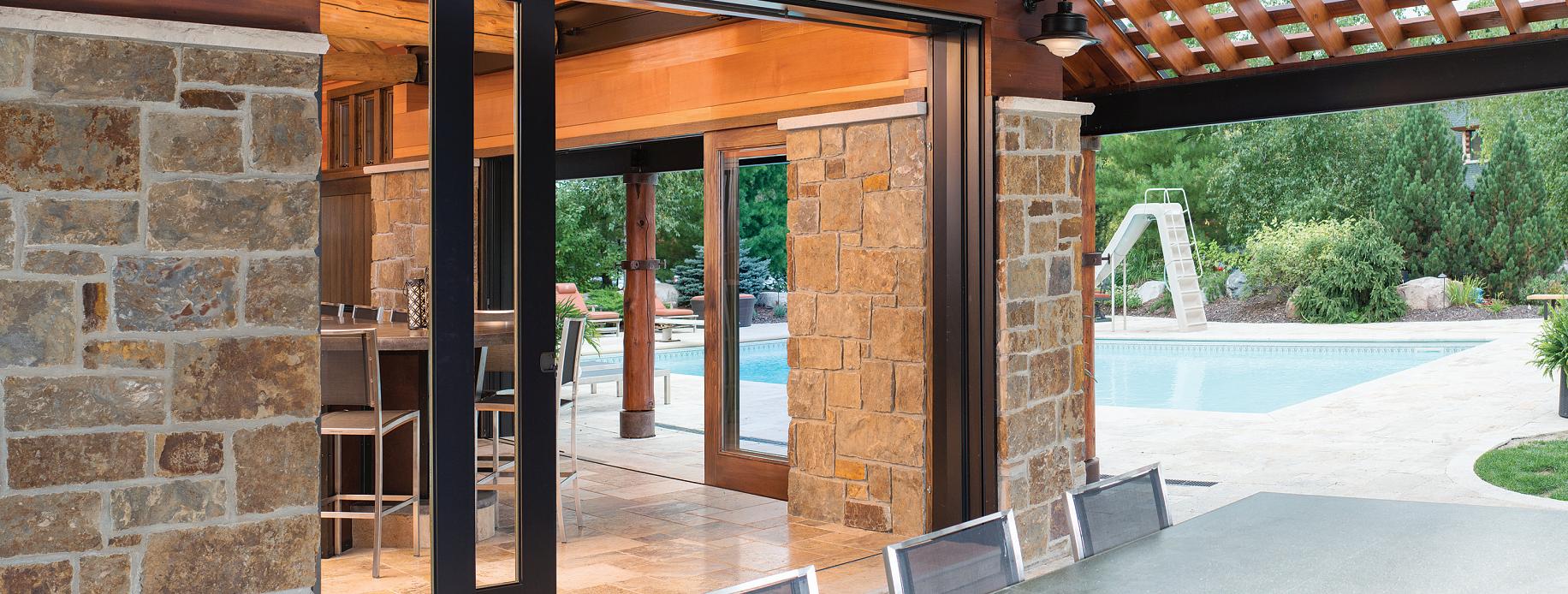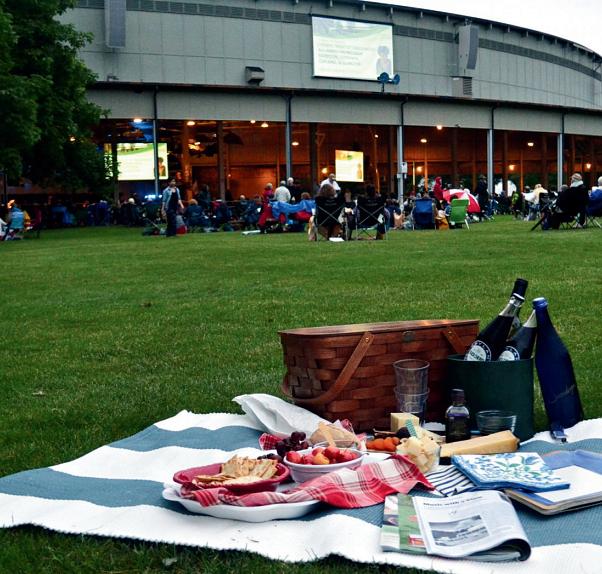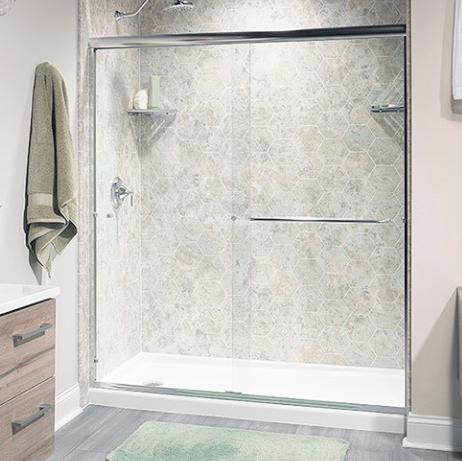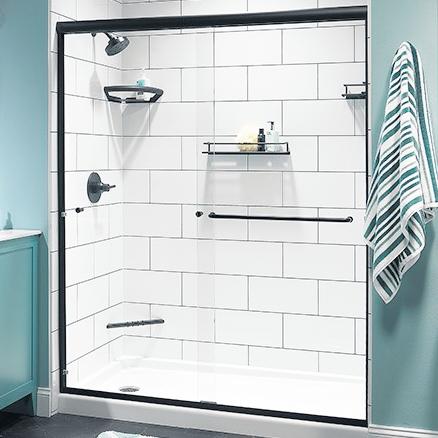

Outdoor Living
THE BERKSHIRE EAGLE

SATURDAY, JUNE 29, 2024







Key factors to consider for your home’s outdoor living area
Home trends come and go. What was popular as recently as a decade ago may have lost some luster in the eyes of today’s home buyers. Though that’s historically been the case in regard to real estate, outdoor living rooms are one relatively recent home trend that figures to have a longer shelf life, especially in the aftermath of a global pandemic during which people were encouraged to stay home as much as possible.
Real estate professionals and organizations like the National Association of Home Builders note the popularity of outdoor living spaces among prospective home buyers, and how that popularity has grown in recent years. Outdoor living rooms not only appeal to potential buyers, they also serve as a means for current homeowners to get more out of their properties. Homeowners mulling outdoor living space projects should consider various factors before deciding to go ahead with a project.
• Cost: The home services resource Angi estimates that adding an outdoor living space to your home usually runs about $7,800 on average, but it could easily climb past $20,000 depending mainly on what kind of space you’re aiming for. For example, including a built-in fire pit in an outdoor living space will cost more than purchasing a stand-alone fire pit that can be picked up and moved. But many homeowners feel a built-in fire pit makes an outdoor living space even more special.
• Return on investment: Return on investment is another factor for homeowners to consider as they try to decide if they should install outdoor living spaces and how to design those areas. Much conflicting data about the ROI on outdoor kitchens can be found online, but many trusted real estate organizations report that such additions do not mesmerize prospective buyers. Data from the American Institute of Architects indicates that outdoor kitchens
Gear up for memorable outdoor movie nights
Outdoor movie nights can be a great way to spend warm evenings with friends and loved ones. The guest list is only limited by the seating you have, and even then, movie watchers easily can sit on picnic blankets, making it simple to host a crowd.
Movie nights outdoors may be different than those in a theater or living room, but certain must-have items are no less important. No movie night under the stars is complete without these essentials.
PROJECTOR AND SCREEN
are routinely ranked among the least desirable home features, which means homeowners should not expect substantial ROI when selling their homes. But that builtin fire pit? Estimates from the National Association of Realtors suggest fire features recover around 67 percent of homeowners’ initial investment. In addition, 83 percent of homeowners surveyed by the NAR who had installed fire features said they had a greater desire to be home after completing the project.
• Space: An outdoor living space may only be as relaxing as the space allows. The proximity of neighbors may affect privacy levels, which can make it hard to enjoy movie night outdoors or curl up to quietly read a good book. In addition, landscaping also may need to be addressed if drainage is an issue in the backyard. That can add to the cost, and drainage concerns may limit the materials homeowners can work with.
MEDIA SOURCE
Individuals have various options for media players. Small players can plug directly into projectors and are the easiest sources for backyard movies if the Wi-Fi signal in the yard is strong. You also may be able to connect a mobile phone or laptop/tablet into the projector, relying on those devices to stream content.
SEATING
A screen and a way to project the movie are musthaves for any outdoor movie night. Projectors should be small enough that they can be carried outside, but large enough to emit enough light to fill the screen. Options range anywhere from $400 and up for quality projectors. Screens run the gamut from inflatable and free-standing options to white sheets hung from a clothesline. A dedicated screen will be more stable and look better, but it all comes down to budget.
PORTABLE SPEAKER
A portable speaker can be moved anywhere you need it. A speaker with an auxiliary input enables you to hook it up to your video source so that the audio-video synchronization is top notch. After all, wireless connections may lag. The speaker will be functional for movie nights as well as music and entertainment for any outdoor event going forward. If your yard is large, you may need more than one speaker.
Folding camp chairs are portable and can be stored for guests who prefer being off the ground for movie nights. Otherwise, thick, waterproof blankets enable guests to spread out while watching movies outdoors. They’re also great for kids who are liable to spend a portion of the time watching the movie, but much of it running around the yard.
THEATER-STYLE
POPCORN MAKER
Kernels, oil and heat are the perfect combination for producing movietheater-worthy popcorn. Place plenty of reusable popcorn containers nearby so guests can bring their bounty back to their seats. Canned beverages with straws also are portable and pair well with popcorn for a great movie experience.
LIGHTING
Outdoor stringed lighting adds ambiance and safety to a space. However, you also may want to consider using some solar-powered staked lights on the ground to map out aisles and make it easier for guests to navigate the yard in the dark.
METRO CREATIVE CONNECTION


e work to meet all your landscaping needs. Walk with us and hand select the best plants for your landscape. A one-year guarantee is offered for all plant material installed
Choosing the Perfect Trees for Your Property
Trees benefit a landscape by serving both aesthetic and utilitarian functions. A home surrounded by healthy green trees can be a sight to behold, and those same trees can also benefit surrounding plants and wildlife.
As appealing as trees are, not all trees and landscapes make for the perfect match. The Arbor Day Foundation (ADF) notes the importance of planning when designing a landscape. Planning ensures the trees you choose
will thrive in your yard’s soil and moisture conditions.
Carefully considering five key factors will help you determine which trees will be the perfect fit for your property.
• Height: Homeowners must consider the projected height of a tree before planting it. Avoid trees that will bump into anything when fully grown, as that can adversely affect surrounding greenery and pose a safety hazard.
• Canopy spread: Trees grow out as well as up, so it’s important to consider their potential width at maturity. Trees that spread out quite a bit don’t necessarily need to be avoided, but it’s important that they’re planted far enough apart so they don’t negatively impact surrounding plants. In addition, wide trees that are planted too close together can make the landscape appear crowded, taking something away


















from its aesthetic appeal.
• Growth rate: Growth rate is an important variable because it can affect how quickly homeowners will see changes in their landscapes. Homeowners who want to plant for privacy can consider trees with quick growth rates or purchase more mature trees that are already near full growth. Those who are not in need of instant transformation can try trees with slower growth rates, which the ADF notes typically live longer than fast-growing species.
• Maintenance: Some trees require more maintenance than others, such as regular pruning, pest control or leaf cleanup. Homeowners should consider the level of care they are willing to provide and choose trees that match their ability to maintain them. Low-maintenance trees can save time and effort, making them an ideal choice for those with busy lifestyles or limited gardening experience.

• Requirements: Different trees require different amounts of sun and moisture and different soil components to thrive. Homeowners can have their soil tested to determine which trees will thrive in it. Local garden centers can be a great resource for homeowners who want insight as to which trees will thrive in their local climates.

For more information on choosing the correct tree, please visit the ADF’s complete tree guide at https://www.arborday.org/ trees/index-choosing.cfm



Discovering fireflies in nature and inviting them into your backyard
Anthony DuvAl
The Berkshire Eagle
Until recently, I’ve never seen fireflies. I’ve lived in Massachusetts for 25 years, and only now have I spotted them in my yard. I want to help you find fireflies in nature and make your backyard firefly-friendly. But first, a little bit about fireflies.
Fireflies, also known as lightning bugs, are insects that use bioluminescence for communicating and attracting mates. Contrary to their name, they are neither bugs nor flies but beetles. Their light is caused by a chemical reaction in their lower abdomen involving a substance called luciferin. When air enters their abdomen, it reacts with luciferin, producing their bright signature glow.
According to the Massachusetts Audubon Society, there are three main groups of flashing fireflies: Photinus, Pyractomena and Photuris. Each of these groups have different ways of attracting mates, including quick flashes, extended glows and ultraviolet chemical signals invisible to the human eye. Photinus pyralis, better known as the big dipper firefly, is the most common firefly in the Northern United States and produces the yellow-green flash you are used to seeing. But be on the lookout for other colors because they are out there in the fields at night. Pyractomena produce an amber flash, while Photuris has a bright green flash.
DISCOVERING FIREFLIES IN NATURE
The best time of year to see fireflies is mid-June through mid-July. Plan your firefly adventure for after sunset, which is when these insects begin to emerge. Remember to wear insect repellent to ward off mosquitoes and other biting insects — grapefruit oil is an extremely effective natural option. Bring along a blanket or lawn chair to sit comfortably while you watch the fireflies ignite the night sky. Invite friends and family to join your excursion. If you’re looking to meet new people, keep an eye out for firefly hikes/watches in your area.
Fireflies love moisture and hate artificial light. Open fields, meadows, tall grass and parks near bodies of water and away from artificial lights are ideal environments for fireflies. Once you’ve found a suitable spot, give your eyes some time to adjust to the darkness. Look for tiny flashes of light near the ground and in the foliage.
Reduce the use of artificial lights and avoid using flashlights or bright screens, as they can disrupt the fireflies’ natural behavior and make them harder to spot. Opt for dim, redfiltered lights if you need illumination.
If you decide to catch fireflies, make sure you use a jar or container with holes. Firefly Conservation & Research recommends adding a damp piece of paper or coffee filter to your container, changing the paper every two days. Don’t keep the

firefly longer than two days so that they can continue to live and mate.
INVITING FIREFLIES INTO YOUR BACKYARD
One of the key elements in attracting fireflies is providing the right habitat. Native plants play a crucial role in creating an ecosystem that supports firefly populations. Native plants are better adapted to your area’s climate and wildlife, including fireflies.
According to Firefly Conservation & Research, planting native plants help your soil retain water. A mixture of native grasses, flowering plants, leafy bushes and hardwood trees creates an ideal environment for fireflies. They thrive in a habitat with a variety of plant heights and textures. For
guidance on selecting native plants, visit your local farm or garden center.
Additionally, removing invasive plant species from your garden will help maintain plant diversity, which is crucial for a healthy ecosystem. Avoid using thick layers of mulch, as they can prevent rain and nutrients from reaching the soil, making it difficult for fireflies to lay eggs and for larvae to find food like snails and earthworms.
Allow leaves to pile up naturally in your garden or create a leaf compost pile in a shady area of your lawn. It’s important to keep the leaves damp because fireflies are drawn to moisture. Adding a small pond, birdbath or even a shallow dish of water can further attract fireflies. Just be sure to keep
the water clean to prevent mosquito breeding!
Chemical pesticides can also disrupt the delicate ecosystem fireflies rely on. Use natural pest control methods or tolerate a few bugs to preserve the fireflies’ habitat. Finally, minimize outdoor lighting and use soft, amber-colored bulbs. Excessive artificial light can disrupt firefly behavior and make it challenging for them to locate mates and prey.
If you follow all of these instructions, you should be able to go exploring for fireflies in your area and welcome them to your yard.
This article was made possible with the research and expertise of Firefly Conservation & Research. For more information on fireflies, visit their website at firefly.org.
ADOBE STOCK IMAGE
Vibrant, green lawns can draw attention to any landscape. Many homeowners toil for hours each week to ensure their lawns are pristine, or invest in lawn care services to help maintain a yard if they do not have the time to do so themselves.
While many treatments can be applied to lawns to help them thrive, animal waste is not among them. Pet owners who aspire to have beautiful lawns will have to take a few extra steps to ensure lawns can persevere despite the presence of furry companions.
RESEED WITH A DAMAGE-RESISTANT GRASS
There are many different types of grass, and some are more resilient than others. Tall fescue, Kentucky bluegrass, perennial ryegrass, and Bermuda grass are just some of the grass varieties that can capably handle pet traffic. If replacing the entire lawn is not possible, consider reseeding or addressing the areas that pets frequent.
STRENGTHEN THE ROOT SYSTEM
It may be tempting to cut the lawn short, particularly if dogs or cats like to nibble on longer blades of grass. But that approach could be doing the lawn a disservice. According to The Home Depot, letting the lawn grow to at least three inches will help keep moisture in the soil and prevent evaporation. That moisture will strengthen the roots, creating a healthier lawn for pets and people.
CREATE PET PATHS
Various materials can be used in these high-traffic
areas to minimize the sights and signs of pet traffic. Mulch or crushed stone can establish these pet highways and look like intended features.
SET BOUNDARIES
Pet urine contains high levels of nitrogen, which can burn grass and turn it brown. It’s not possible to water down urine or pick up solid waste immediately every time a pet goes outdoors, so designate a pet-friendly spot for potty time. Use fencing or a dog run to separate this area and help mitigate “land mines” all over the lawn. Fencing also can keep pets out of vegetable gardens and away from potentially toxic plants.
AVOID CHEMICAL LAWN TREATMENTS
When pets use the yard and rest on the lawn, you’ll need to eliminate products that can be harmful to them. Choose all-natural fertilizers and weed and pest preventatives.
LOOK FOR ALTERNATIVES
If maintaining a lawn with pets seems like an uphill battle, consider swapping out your landscape with a variety of materials. Scale back on grass, and incorporate groundcover, hardscape materials like pea gravel, or extend the patio. Artificial turf also is an option, as it won’t brown and wither. Some turf products can even be quickly and thoroughly cleaned with water.
It can take some trial and error for pet parents to protect their lawns from the effects of having furry friends playing in the yard.






Rooted Resilience
The Beauty and Benefits of Native Plants
Spring and summer present ideal growing conditions for many plants, making these seasons an ideal time to tend to lawns and gardens. Though it’s easy to succumb to the temptation of exotic plants, avid gardeners and eco-conscious planters recognize the significance of native plants. Novices may not realize that native plants are much better for a landscape
and the local ecosystem it calls home. Recognition of the many benefits of native plants can make for healthier lawns and gardens and a healthier planet as well.
Native plants are built for local climates. One of the issues gardeners who plant exotic plants run into is keeping those plants thriving when weather turns harsh.






For example, exotic plants may require extra watering in areas that experience drought or even long periods without precipitation in spring and notably summer.
Native plants save you money. It’s also important to note that native plants save homeowners money. Because they’re capable of thriving in local conditions, native plants tend to require less watering, which can help homeowners reduce their utility costs. But native plants also require less upkeep, which means homeowners can save on potentially costly, not to mention eco-unfriendly, pesticides and other amendments in order to maintain the look of exotic plants. And though it’s not always the case, exotic plants tend to cost more at nurseries than natives.
Native plants support biodiversity. Native plants support local wildlife by providing habitat and food sources
for insects, birds and other animals. This can contribute to a healthier and more balanced ecosystem in your yard.
Native plants blend in with an existing landscape. Native plants look natural within an existing landscape, adding some instant aesthetic appeal without breaking the bank. When planting exotics, homeowners may feel a need to redesign their entire gardens to create a certain look (think Japanese garden). That can quickly consume a budget and take up a lot of free time in both the shortand long-term.
Native plants help the local economy. Choosing native plants can also support local nurseries and growers who specialize in propagating and selling native species. This helps sustain local economies and promotes the conservation of native plant populations.










































How outdoor time reduces stress & boosts health
Being in good health and avoiding various diseases often comes down to a combination of factors. Individuals may be aware that nutrition and exercise play important roles in personal well-being, but nature may provide its own medicinal benefits as well.
A number of studies have examined the potential healing components of being in nature. The World Health Organization released a report in 2023 titled “Green and Blue Spaces and Mental Health,” which indicated that time in nature improves mood, mindsets and mental health. This occurs regardless of whether that nature was “country” regions or urban areas.
Here are some of the ways nature can have a healing effect on your health.
IMMUNITY PROTECTION
Trees and plants emit aromatic compounds called
phytoncides. When inhaled, these compounds can ignite healthy biological changes similar to the concepts of aromatherapy. When people walk in forests or other green areas, they often experience changes in the blood that are associated with protection against cancer, improved immunity and lower blood pressure.
GET A BRAIN BREAK
When spending time in nature, attention is focused on the scenery, the animals and the rest of the environment. This may help quiet the rush of thoughts in your head and help you think freely.
REDUCE STRESS
Stress is a catalyst for a number of adverse health conditions. The Mayo Clinic says stress can cause headache, muscle tension, fatigue, changes in sex drive, and a weaker immune system, among other things.
Being outside in nature and away from work and home responsibilities can help reduce stress levels.
IMPROVED SLEEP QUALITY
Exposure to natural light helps regulate the body’s circadian rhythm, leading to better sleep patterns. Natural environments can also promote relaxation and reduce insomnia, resulting in more restful and restorative sleep.
GET VITAMIN D
The body naturally produces vitamin D from sun exposure. The National Institutes of Health says it is optimal to have sun exposure for five to 30 minutes a day, most days a week, to absorb UVB rays and effectively make vitamin D. Vitamin D is a nutrient the body needs to build and maintain strong bones. Vitamin D also regulates many other cellular functions in the body, and may be able to prevent cognitive decline.



INSPIRES EXERCISE
People may be more inclined to be physically active while outdoors. Hiking, cycling, swimming and even strolls in the park all make the outdoors more fun. Exercise promotes heart health and helps people maintain a healthy weight.
BETTER SOCIAL INTERACTION
Outdoor activities often
encourage social engagement and community involvement. Whether it’s a group hike, a family picnic, or playing sports, spending time in nature can strengthen relationships and foster a sense of belonging.
Nature can have a healing effect, and more time outdoors can promote mental and physical well-being.


METRO CREATIVE CONNECTION
3RD ANNUAL
LIFE’S A PICNIC SWEEPSTAKES



































